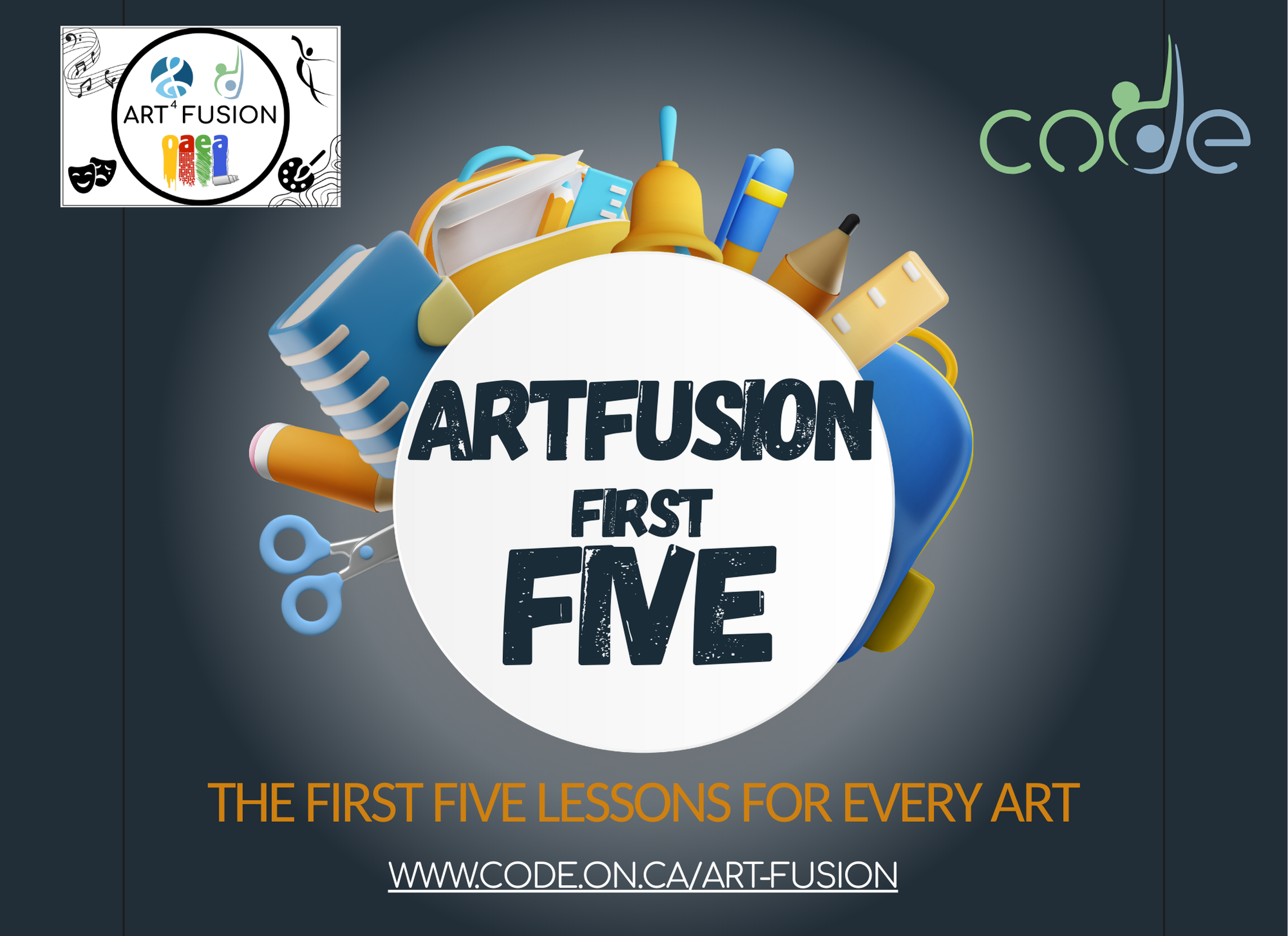Art Fusion First Five

CODE, OMEA, and OAEA have teamed up to launch Art Fusion First Five—a brand-new set of ready-to-use lessons designed to help every teacher build a strong, inclusive foundation in drama, dance, music, and visual arts. Whether you’re stepping into the arts classroom for the first time or looking for fresh inspiration, these resources offer practical support, creative ideas, and a focus on student well-being.









